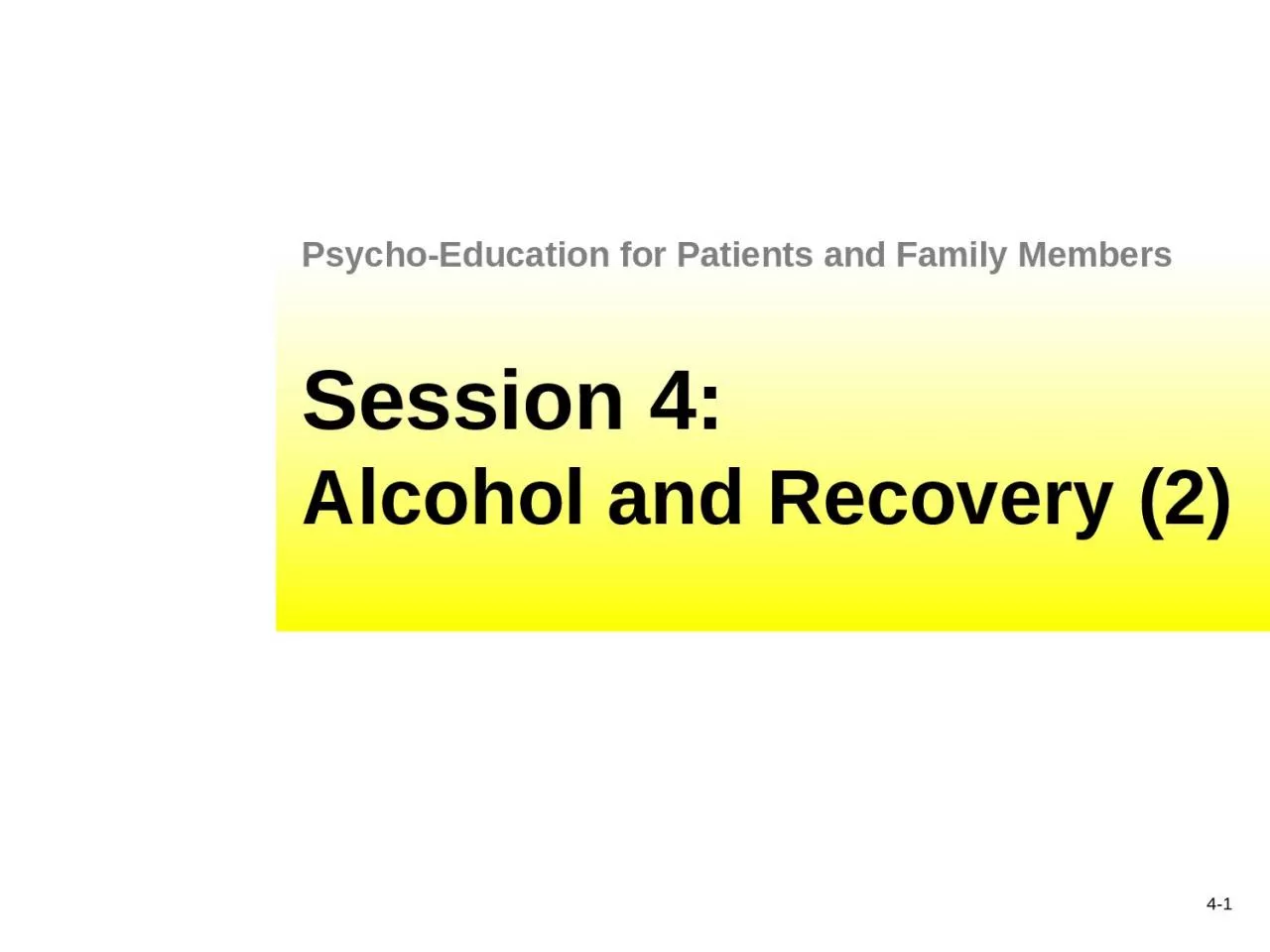

PsychoEducation for Patients and Family Members Alcohol and Women Compared with men women develop alcoholrelated disease more quickly and with less alcohol 4 2 Alcohol and Pregnancy Babies born to mothers who drank during pregnancy may have mental retardation or other learning and behavio ID: 1006999
Download Presentation The PPT/PDF document "4- 1 Session 4: Alcohol and Recovery (2)" is the property of its rightful owner. Permission is granted to download and print the materials on this web site for personal, non-commercial use only, and to display it on your personal computer provided you do not modify the materials and that you retain all copyright notices contained in the materials. By downloading content from our website, you accept the terms of this agreement.
1. 4-1Session 4:Alcohol and Recovery (2)Psycho-Education for Patients and Family Members
2. Alcohol and WomenCompared with men, women develop alcohol-related disease more quickly and with less alcohol.4-2
3. Alcohol and PregnancyBabies born to mothers who drank during pregnancy may have mental retardation or other learning and behavioral problems.4-3
4. Fetal Alcohol Spectrum DisordersThe most serious risk during pregnancy is fetal alcohol spectrum disorders (FASD).FASD is the leading known cause of mental retardation.4-4
5. Fetal Alcohol Spectrum DisordersBehavioral and neurological problems associated with FASD may lead to poor academic performance and legal and employment difficulties in adolescence and adulthood.4-5Cognitive and Behavioral Impairments
6. Fetal Alcohol Spectrum DisordersSkin folds at corner of eyeLow nasal bridgeShort noseThin upper lipSmall head circumferenceSmall eye openingSmall midfaceIndistinct philtrum (groove between nose and upper lip)4-6Craniofacial Features
7. Questions:Do you think it is a good idea to drink alcohol in recovery from drug dependence?Why do you think so?1-7
8. Total AbstinencePatients in treatment of drug dependence are asked to stop using all illicit drugs and alcohol.People in recovery who drink alcohol are 8 times more likely to relapse to stimulant use than those who don’t drink.4-8
9. Other Reasons for AbstainingDrinking prevents people in recovery from directly confronting their stimulant use disorder.Drinking puts people in recovery at risk of becoming dependent on alcohol.4-9
10. Question:What are some triggers for alcohol in each category?PeoplePlaces and situationsMaterialsFeelings1-10
11. Alcohol Triggers Are EverywhereAdvertisementsMoviesTV shows Friends and family who drinkCelebrations and holidays4-11
12. Internal TriggersDepressionAnxietyLonelinessStressAngerGuilt 4-12
13. Relapse Risk Posed by AlcoholAlcoholLowered inhibitionsAdd a trigger, and the result may beimpulsive use of stimulants4-13
14. Question:What are possible ways that you can prepare to avoid drinking alcohol?1-14
15. Plan Not To DrinkThink about other ways of celebrating. Avoid being around others who are drinking. Think about other ways of spending time with friends. Make friends with others in recovery.Practice saying “no thank you.” Avoid going to bars and parties. Talk to your family.4-15
16. Plan To CopeAttend 12-Step or self-help group meetings.Discuss your feelings in group.Practice relaxation techniques.Practice HALT (not becoming too Hungry, Angry, Lonely, or Tired).Remind yourself that uncomfortable feelings are normal and will pass.Obtain help from a therapist.4-16